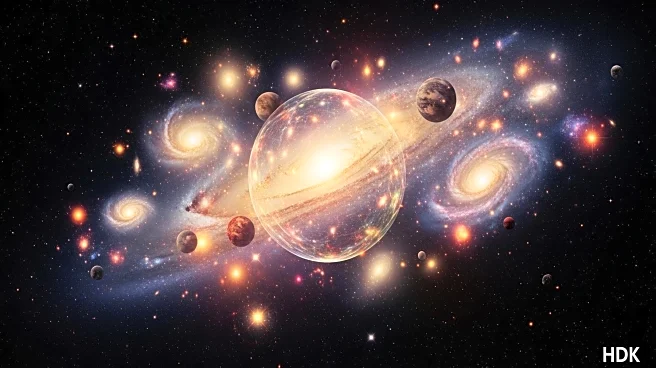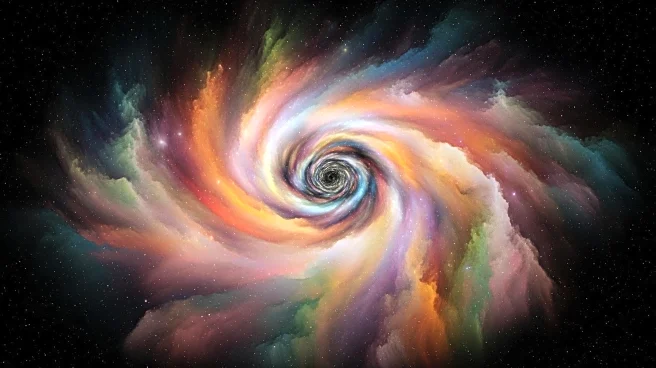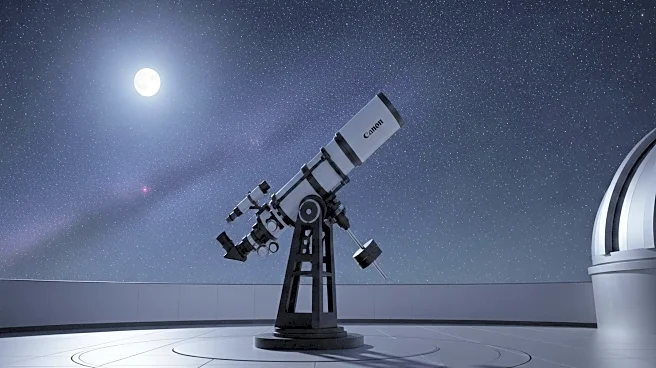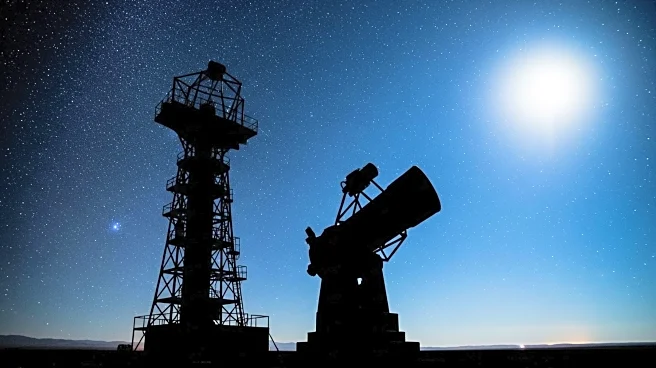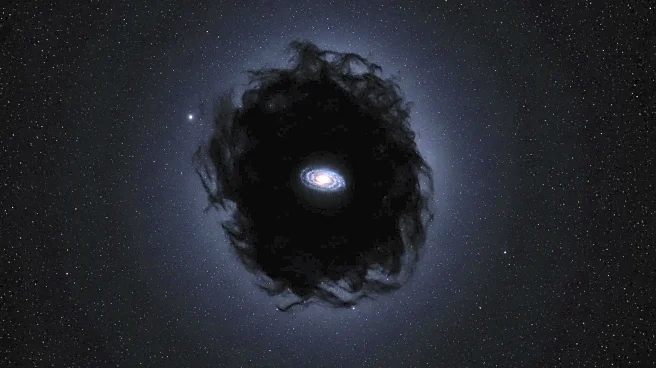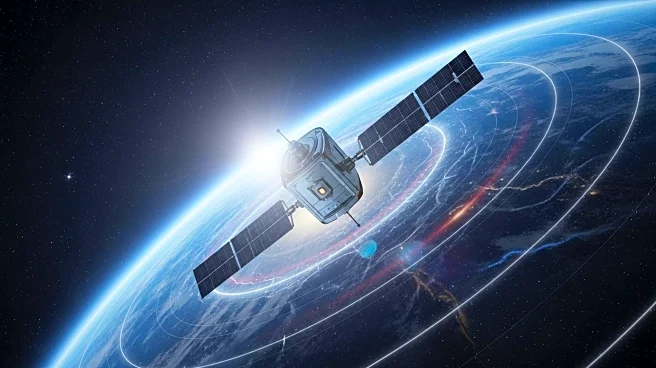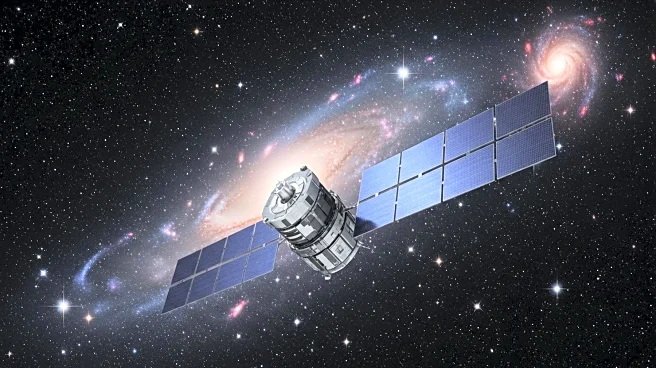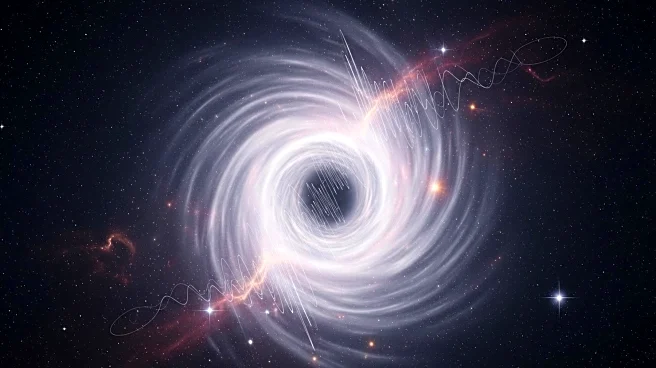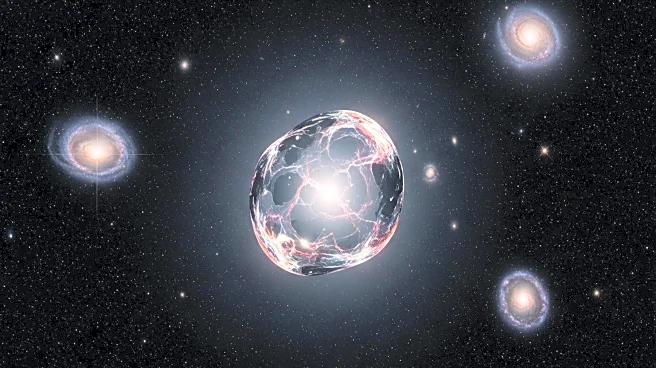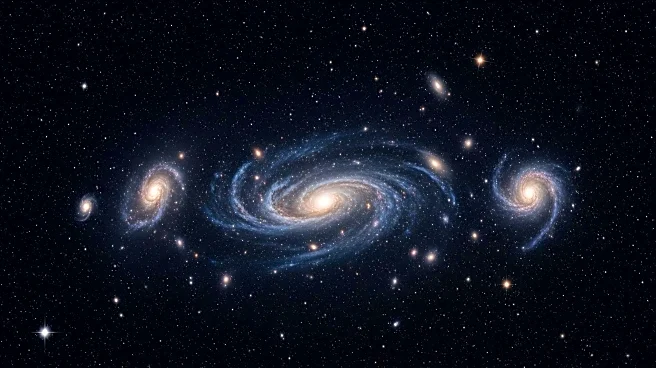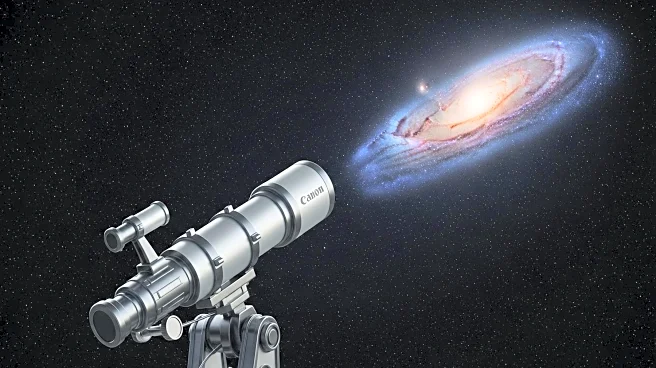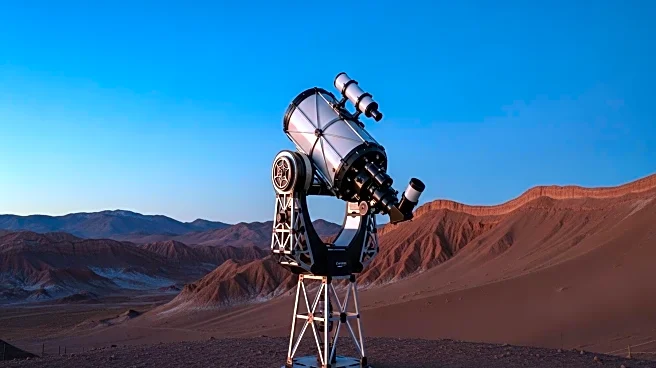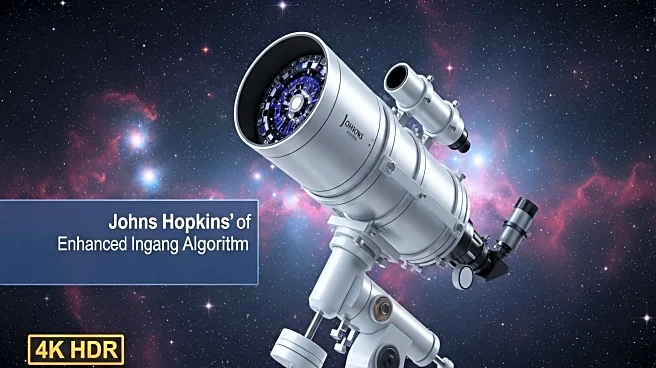What is the story about?
What's Happening?
A recent study by Rajendra P. Gupta, an adjunct physics professor at Ottawa University, suggests that dark matter and dark energy, which are believed to constitute about 95% of the universe, may not exist. Instead, Gupta proposes that the fundamental laws of nature, such as the speed of light and the strength of gravity, might change as the universe ages. This hypothesis, known as the CCC+TL model, posits that the universe's forces diminish over time, creating effects similar to those attributed to dark matter and dark energy. Gupta's model uses a variable constant to describe galactic motion, challenging the traditional view that invisible particles and energies govern the universe.
Why It's Important?
If Gupta's theory is validated, it could revolutionize the fields of physics and astronomy by shifting focus from searching for elusive particles to studying cosmic constants. This change could lead to breakthroughs in understanding galaxy development, universe expansion, and life-sustaining conditions in planetary systems. The implications extend beyond scientific communities, offering a new perspective on the universe's history and its governing laws. The research challenges decades of investment in dark matter studies, suggesting that the universe may be less mysterious and more quantifiable than previously thought.
What's Next?
Gupta's model faces challenges, including testing against gravitational lensing, which is well-explained by dark matter. The theory assumes galaxies are spherical, though they are often disk-shaped or irregular. Further testing and validation are required to confirm the model's accuracy. If successful, this research could reshape scientific approaches to cosmology, focusing on precise measurements of cosmic constants over time and distance. The study's findings are published in the journal MDPI Galaxies, inviting further scrutiny and discussion within the scientific community.
Beyond the Headlines
The proposal suggests a universe with evolving rules, potentially extending its age and altering cosmic history. This perspective could simplify the understanding of cosmic phenomena, making them more intuitive and accessible. The research invites reconsideration of the universe's mysteries, proposing that they may be illusions created by changing natural constants. This shift could influence public perception, presenting the universe as governed by laws rather than invisible matter.
AI Generated Content
Do you find this article useful?
